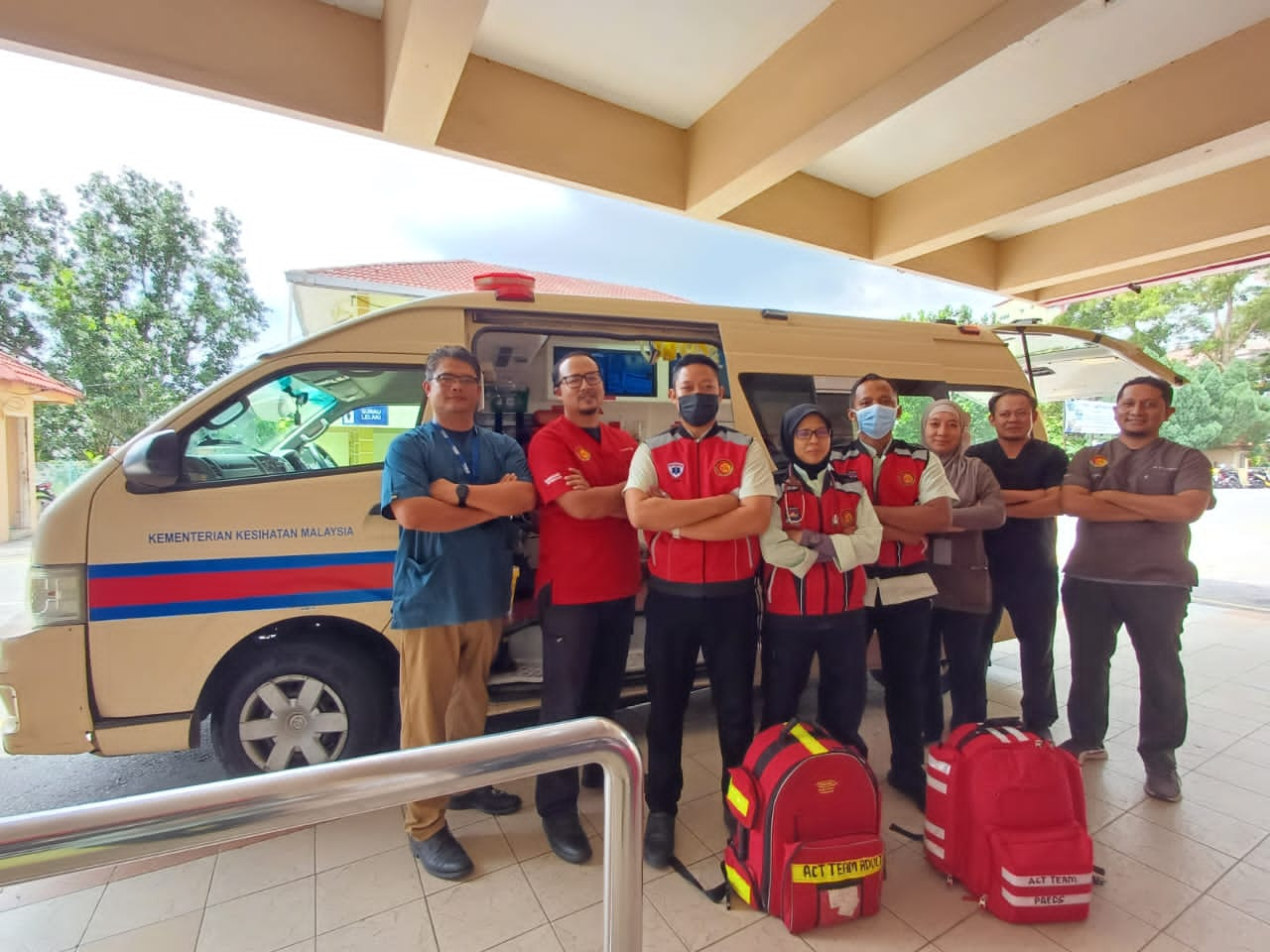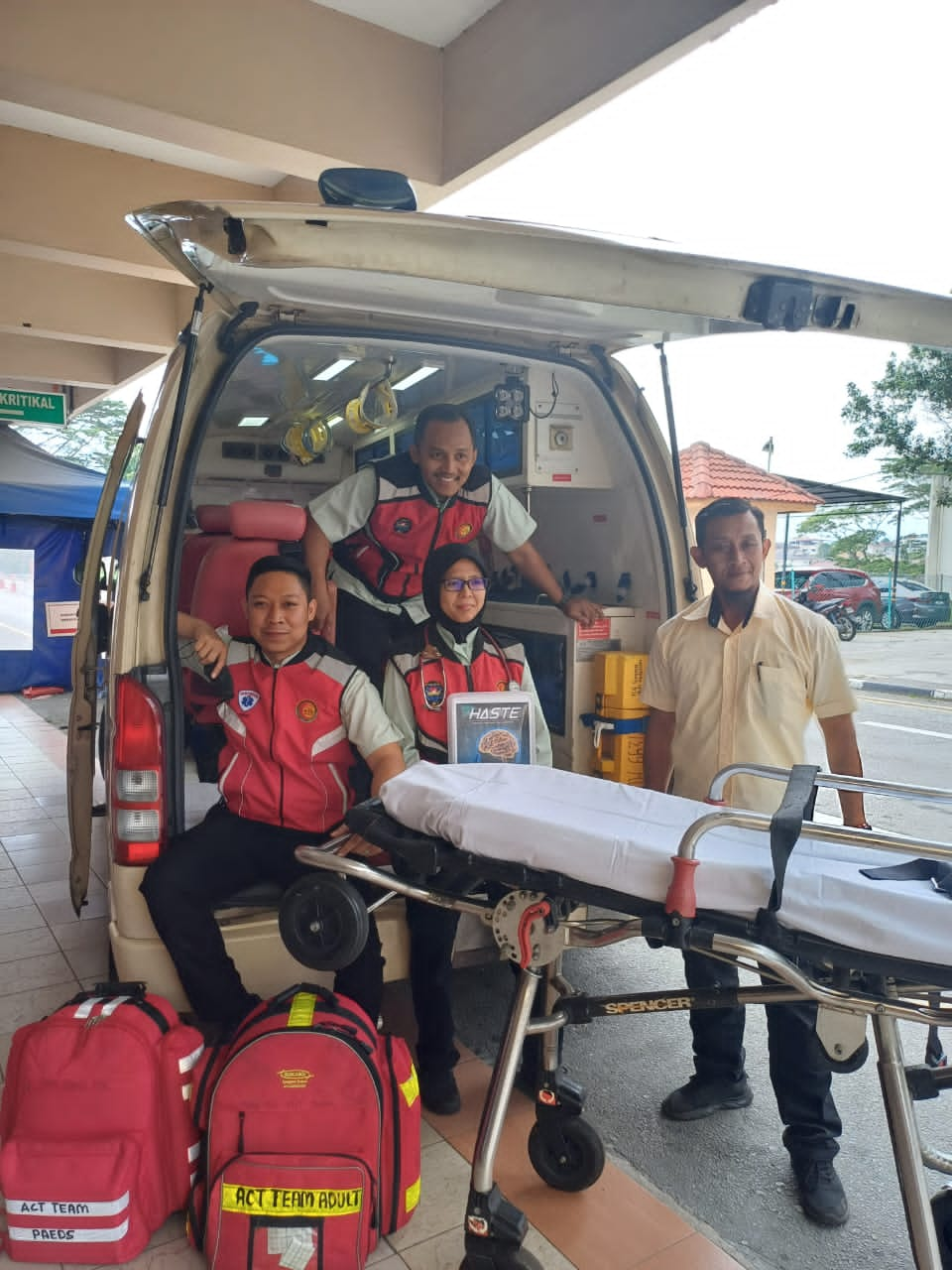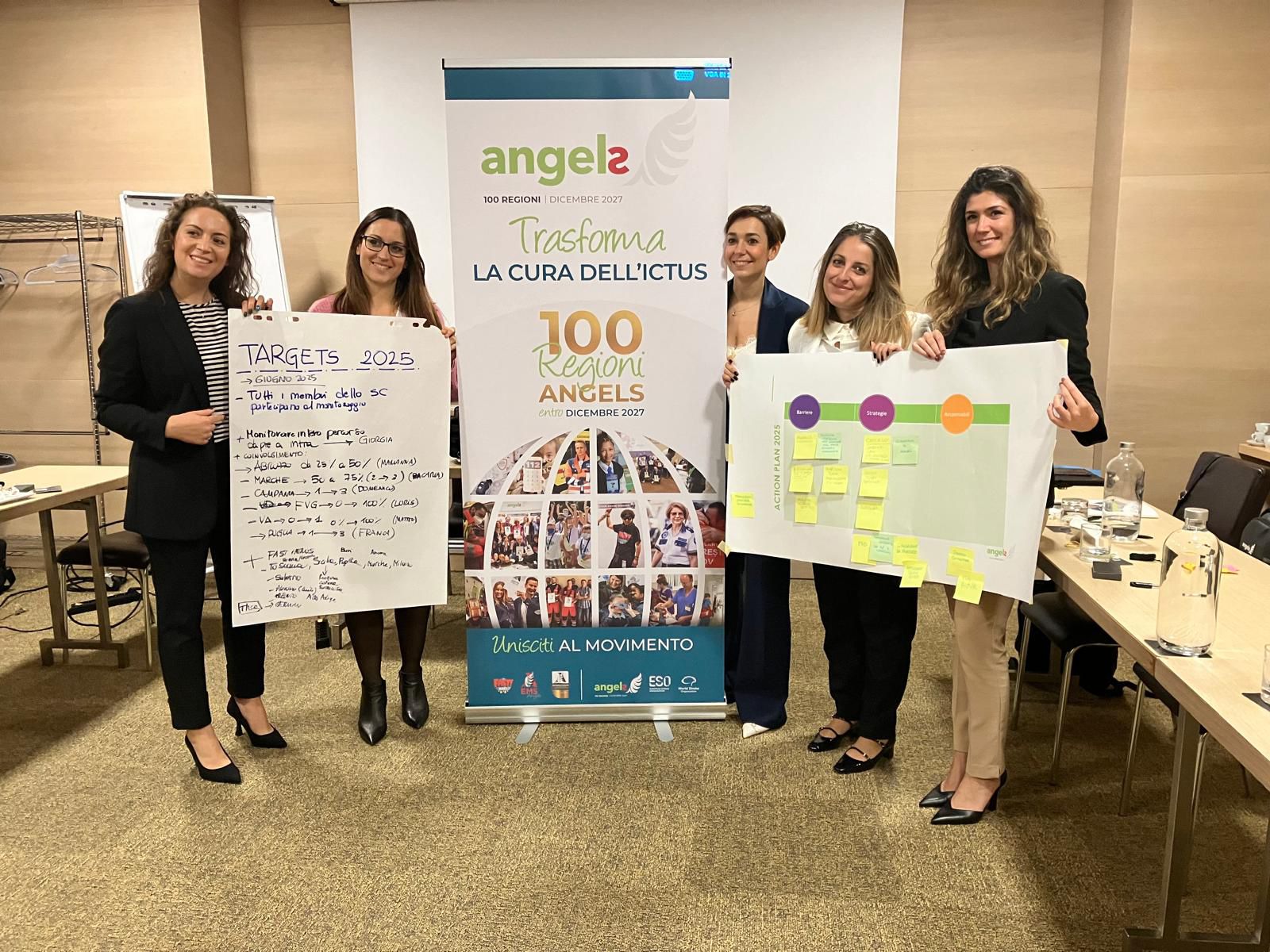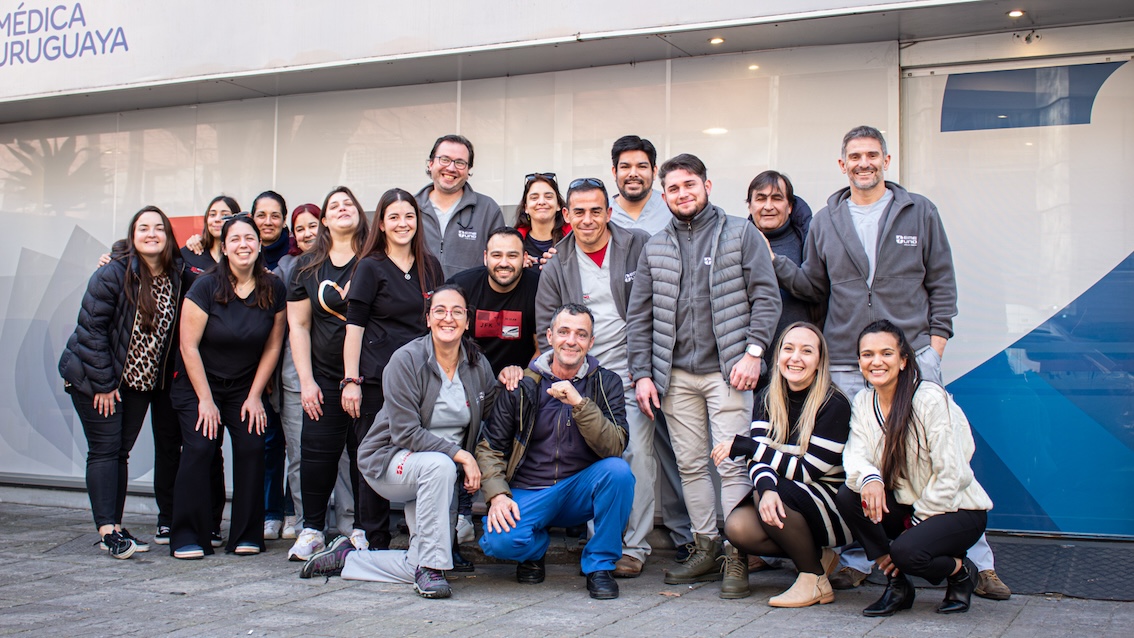
3년 전까지는 말레이시아 네게리 셈빌라 주의 앰뷸런스 서비스에 대한 뇌졸중 전화가 긴급한 긴급 상황으로 간주되지 않았습니다. 이들은 레벨 4 우선순위에 배정되었으며, 프로토콜에서는 환자를 가장 가까운 지역 병원으로 데려가기만 했습니다.
그러나 2020년에는 뇌졸중크 샷을 한 단계 높은 우선순위로 만드십시오. 그 이후로 뇌졸중이 의심되면 디스패치 센터가 높은 경고를 받게 됩니다. 가장 가깝고 가장 경험이 많은 앰뷸런스가 현장에 참석하도록 활성화될 것이며, 뇌졸중 치료 준비가 되지 않은 경우 가장 가까운 병원을 우회하여 주 수도인 Seremban의 Tuanku Ja’afar 병원으로 환자를 직접 데려갈 것입니다.
이 유의한 변화의 전조는 투안쿠 자파르 병원이 처음으로 허혈성 뇌졸중 환자를 혈전용해술로 치료한 날인 2019년 5월 5일에 발생했다. 60분 미만의 DTN 시간은 병원 최초의 WSO Angels 어워드를 수상하기에 충분했습니다. 향후 2년 동안 다이아몬드상 기준을 충족하는 말레이시아의 소수의 병원 중 하나가 되는 것은 치료율을 두 배로 높이고 치료 시간을 절반으로 줄일 것입니다.
이 이정표에 도달하고 25분의 세계적 수준의 중간 DTN 시간을 달성하기 위해, 병원은 불필요한 모든 상호작용을 없애기 위한 경로를 간소화했습니다. 한 가지 주요 개입은 최적화된 뇌졸중 경로가 환자 또는 그 친척이 999로 전화를 거는 순간 시작되었다는 사실을 인정하여 앰뷸런스 서비스 부서를 뇌졸중 뇌졸중팀 일원으로 만드는 것이었습니다. 이 협력의 결과는 현재 주 전역의 병원에서 사용되고 있는 HASTE 프로토콜과 입원 전 팀을 위한 HASTE 키트의 개발이었습니다. 프로토콜
HASTE는 응급 상황에서 초급성 뇌졸중 스마트 트랙을 의미하며, 본질적으로 중요한 일을 올바르게 수행하기 위한 모델입니다. TuankuJa’afar 병원은 응급 구조대원이 병원 전단계 뇌졸중 치료에 대한 적절한 교육을 받고, 환자를 평가하기 위한 체크리스트와 뇌졸중 척도가 포함된 HASTE 키트에 대한 소구를 하고, ER 의사의 원격 감독을 받도록 하는 것을 포함합니다.
사전 통지 및 사전 등록을 통해 전담 뇌졸중팀 도착 시 환자를 받을 준비가 되었는지 확인합니다. 응급실에서 잠깐 피트스탑한 후, 환자는 CT 스캐너로 바퀴를 바퀴로 이동하며, 이는 레드존을 15보 넘나드는 지점에 위치합니다.
TuankuJa’afar 병원은 해당 주에 유일한 두 CT 스캔 중 하나를 보유하고 있지만 뇌졸중 환자는 불가피한 대기열을 건너뜁니다. 또 다른 시간 절약 전술에서, 환자는 치료 결정이 내려지고 응급실의 전용 침대로 옮겨질 때까지 EMS 운반차에 남아 있습니다.
이 통합 전략의 한 가지 결과는 Hospital TuankuJa’afarkeeps가 다양한 상을 수상했다는 것입니다. 각 상은 응급 의사 Dr Emi Noorina Binti Mohd Nor, Dr Syed Hussein Barakbah, 급성 내과(AIM) 의사인 Dr Ng Yin Jie의 도움을 받아 뇌졸중 프로그램을 추진하는 Dr Mohamad Azzlee Mustafa의 한계에 있습니다.
다른 하나는 투안쿠자파 앰뷸런스 서비스 부서도 EMS Angels 어워드를 수상한 유럽 외 최초의 EMS 팀으로 국제적인 인정을 받고 있다는 것입니다.

WSO Angels Awards와 마찬가지로, EMS 어워드는 성과를 인정할 뿐만 아니라 개선이 필요한 영역을 식별하여 표준 치료를 높이는 역할을 합니다. 성과는 현장 근무 시간, 사전 알림, 뇌졸중 치료 인증 병원으로의 배송, 환자 약물 보고, 마지막으로 알려진 정상 시간을 포함하는 기준에 따라 측정됩니다.
2023년 1분기에 TuankuJa’afar 팀이 다이아몬드 등급을 달성하지 못하게 된 사전 알림율의 단일 백분율 포인트. Q1 그러나 지금은 두 번째 백금에 만족해야 했지만, 모든 눈은 10분의 중간 현장 시간에 있습니다. 이는 어워드 코디네이터인 Katarzyna Putyło가 지금까지 본 최고 수치입니다.
뇌졸중 커뮤니티에서 병원과 EMS 간의 밀접한 업무 관계가 생명을 구한다는 인식이 증가하고 있으며, TuankuJa’afar의 병원 전단계 및 병원 내 뇌졸중 치료에 대한 단일 프로토콜이 그 요점입니다. 뇌졸중 치료 시스템에서 EMS의 역할에 대한 A2020 미국 연구는 급성 허혈성 뇌졸중 환자의 혈전용해술율을 개선하는 데 EMS 통합이 중요함을 발견했습니다. 뇌졸중
급성 심근경색(acute myocardial infarction, AMI) 증례에서 병원-EMS 협력에 대한 초기 연구에서는 적극적 협력이 낮은 AMI 사망률과 관련이 있는 것으로 밝혀졌다. 해당 연구의 저자들이 권장하는 조치는TuankuJa’afar와 같은 뇌졸중 경로 협력에도 동일하게 적용됩니다. 즉, 강력한 의사소통과 조율, 품질 개선 활동에 EMS 참여, 전문가로서 EMS 제공자에 대한 존중입니다.
TuankuJa’afarrespect는 여러 가지 방식으로 표현됩니다. 앰뷸런스 팀은 환자 결과에 대한 정기적인 피드백을 받을 뿐만 아니라, 프로토콜가 어떻게 개선될 수 있는지에 대한 피드백을 제공하도록 요청받게 되며, 의사 및 응급구조사와 지식을 공유할 수 있는 공동 워크숍에 발표자로 포함됩니다.
Mohamad Azzlee Mustafa 박사는 "이들을 인정하는 것이 중요합니다. “그들은 우리 팀의 일부입니다.”



